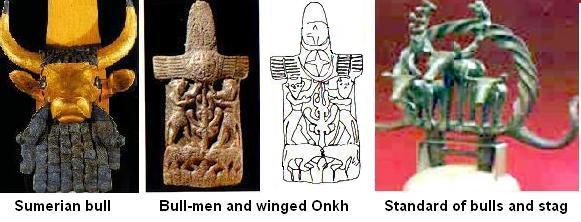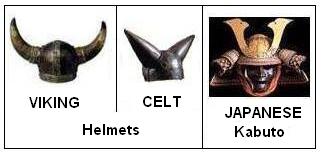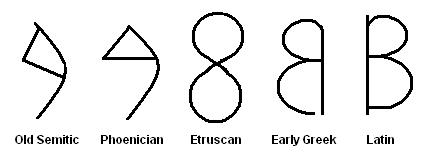|
There
have been several waves of migration from Central Asia towards
the north-west of Europe. During the last 2 millennia Altaic
and Uralic tribes were the first inhabitants of the Baltic
region. Later on Indo-European tribes moved in to northern
Europe, but their original homeland was the west-central
Asiatic territories. The Finno-Ugric language group, which
belongs to the Uralic languages, includes Finnish, Hungarian,
Estonian and Samoyedic. There are claims linking Finnish to a
Proto-Finnic language of Asia, which is no other then the
Central Asiatic Proto-language (see Chapter 2,
Diversification of Languages).
Uralic
languages share many common features with Altaic languages.
For example, both language group are agglutinative and form
new words with the help of suffixes. Furthermore, both
language group lack grammatical gender and use one pronoun for
both “he” and “she”. Examples are: In Finnish
haen, in Estonian
tema, in
Hungarian oo and in
Turkish o. In the
Indo-European Swedish language the Finnish
haen has changed to
han
for male and hon
for female (pronounced as hoon). The grammatical gender
differentiation did not exist in the Proto-language but
started much later, with the Indo-European languages. We can
substantiate this claim from the fact that both man as well as
women could be the leaders of ancient societies.
It has been
mentioned in Chapter 5,
Climatic changes that the early title of the
Eurasian ruler was Khang.
On the other hand we saw in Chapter 15,
The sacred horn, that
most ancient societies were matriarchal. The ancient
Khang title
became vulgarized in time and changed gradually to “haen” in
Finnish and “han” in Swedish.

As the
leadership passed from women to men, the bull symbolism
replaced the ibex symbolism to a very large extent (see
Chapter 7, The Minoan Culture).
Although the ibex figure did not disappear altogether, we see
that the bull has been the favorite symbol of the
male-dominated societies. On the left above, a bull head is on
a Sumerian harp found at Ur. On the next picture we see two
bull-men lifting a winged Onkh
symbol (1)
(see Chapter 6, Universal
Symbols). The winged disk is clearly the symbol of
the sun-god and the + sign in the center of the disk is the
central Asiatic Okh.
The tree between the two bull-men is the symbol of longevity,
known as “the tree of life”. The standard on the right with a
deer and two bulls is the symbol of the Hittite nation. We
have already seen that the symbolism hidden in the number
three is an indication of leadership (see Chapters 12 and 17).
The Vikings
and the Celts on the north-west as well as the Japanese on the
east of Asia used helmets with bull horns as a sign of power
and strength. Below we see three such helmets symbolizing the
powerful bull. The Japanese helmet is called
kabuto, and reminds us
of “kab / kap”,
mentioned in Chapter 12.

It is
generally accepted that “Taurus” literally meaning bull, has
its origin in Latin. Generally linguists stop investigating
the etymology of a word once they reach the Latin origin. In
my opinion the original form of “Taurus” was
Tur-uz, which changed
in time to Tur-us and Taurus, meaning “we
are the Tur people” as mentioned in Chapter 8,
The double-edged ax.
Taurus entered, most probably, into Latin from Etruscan which
is a Ural-Altaic language. But even if it came from Anatolia
with the Greek influence, its origin is still connected to the
Asiatic Tur people.
Not only
taurus but also the
origin of the word bull
can be traced back to the Asiatic root culture. We find
bufalus in Latin,
buffalo in Italian,
buffle
in French, bucca
(stag, he-goat) in Old English,
bukk in Old
German, bock in
Swedish, bouc
and bouqetin in
French and buck
in modern English. But, we have also
boða (adult bull),
buzaðý (young bull)
and buðra (male
camel) in Turkish, which did not originate from Latin. Arabic
bukra, bakara and
Mongolian buha also
cannot be traced back to Latin. Furthermore, in the Asiatic
Kirghiz language which is a Turkish dialect
buka means bull and
bukachar means calf.
Therefore,
we have to conclude that all these words originated from the
monosyllabic root word bu
(pronounced as boo). “Bu” was the name of the mountain goat,
the ibex, in the ancient Asiatic Proto-language. This word has
been one of the earliest pictographic seals drawn by the
Central Asiatic Uighur culture. Below left we see some
versions of the early bu
seal. On the right side the two forms of B in the Turkish
Orhun script are shown. The Orhun script is a syllabery and
therefore each sign stands for certain syllables containing
phonetic harmony. The b1 sign can be read as:
bu, ba,
bo, bý
or ub, ab, ob, yb.
These syllables have the thick-sounds harmony, while the b2
sign has the thin-sounds harmony and can be read as:
bü, be, bö, bi or
üb, eb, öb, ib.

The ancient
BU seals shown above are found carved on rocks, next to
petroglyphs in the Yenisei and Orhun valleys of Central Asia.
The first and second seals are stylized front-view appearances
of the mountain goat and the bull. Several different but
similar forms of the “Bu” seal has been found in Asia. This is
because during the early period in the evolution of writing
the ideograms were not standardized and different versions of
the same seal could exist simultaneously
(2).
We will see that the Orhun alphabet is not borrowed or
transformed from the Phoenician script, as many believe, but
followed its own development within the early Central Asiatic
Turkic culture. This claim needs further proof and therefore
will be elaborated extensively in the future chapters.
When the
nomadic tribes from the north met the southern tribes from the
Indus Valley on the eastern coasts of the Mediterranean Sea,
the “bu” seal became more or less a standard consonant in the
Old Semitic syllabic writing system (see the map in Chapter
18, Towards Sumer and Elam).
The BU seal underwent further transformations as the seafaring
Phoenicians carried it far north. The third sign looking like
an 8 (below) is accepted by most scholars to represent the F
sound. This is because it stands for the F sound in the Lydian
alphabet (3).
But since Etruscan is still unintelligible and cannot be read
correctly, the sound connected to the figure 8 is debatable.
It seems that the two legs of the b2 seal were joined to form
the rounded Etruscan as well as the early Greek B. This is how
the capital B came into being, while the miniscule “b” in the
Latin alphabet evolved from the b1 seal of the Orhun script.
 |